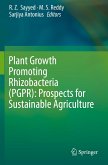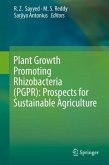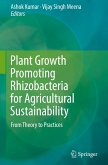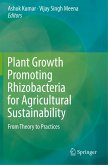Co-inoculation of Rhizobium leguminosarum, Azotobacter chroococcum, Azospirillum brasilense, Pseudomonas fluorescens and Bacillus spp. enhances their population synergistically in soil which may leads to development in root nodules. In addition they also increase available nutrients (N, P, K, and Fe) to plants and help in the uptake of nutrients by plants and promote growth of the plant. The differences in plant growth promotion among the isolates are attributed to their individual competencies. Consortia 2 (T2 + T4+ T5 + T6 + T11) and Consortia 1 (T2 + T3+ T5 + T6 + T11) were most potent in terms of growth promotion improves yield and yield attributing characters by modulatingphytohormone and better nutrient acquisition over the control (T1) in mungbean. Furthermore, it also modulates the gene expressions of ARF gene.
Bitte wählen Sie Ihr Anliegen aus.
Rechnungen
Retourenschein anfordern
Bestellstatus
Storno








